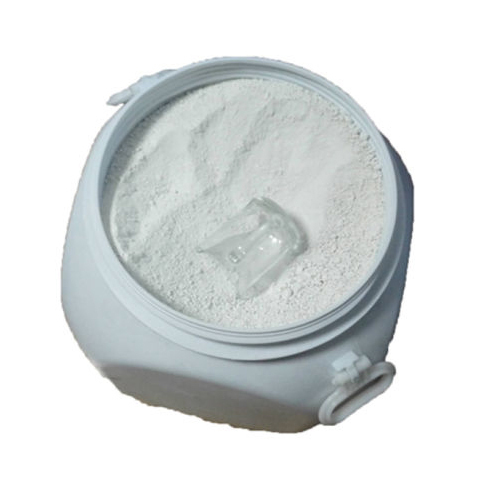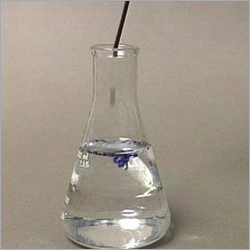
Calcium Hypophosphite 67-70%
1950.00 - 2050.00 INR/Ton
Product Details:
- Usage Industrial
- Physical Form Powder
- Application Industrial
- Molecular Formula CaH4O4P2
- Click to View more
X
Calcium Hypophosphite 67-70% Price and Quantity
- 1950.00 - 2050.00 INR/Ton
- 20 Ton
Calcium Hypophosphite 67-70% Specifications
- CaH4O4P2
- Industrial
- Industrial
- Powder
Product Description
Our company offers premium grade Calcium Hypophosphite 67-70% that is available in purest form with purity of up to 98 percent. This powdered compound is widely used as a bleaching agent and a disinfectant. It is commonly used in swimming pools to sanitize water. It is a strong oxidizer which makes it react violently with other chemicals such as acids and organic materials. It is advised to handle it with extra care using gloves, face masks, and glasses.
Calcium Hypophosphite Properties:
1. Chemical Structure: Calcium hypophosphite is a salt-like compound composed of calcium cations (Ca2+) and hypophosphite anions (H2PO2-).
2. Physical State: Calcium hypophosphite is typically found as a white crystalline solid.
3. Solubility: It is soluble in water, which makes it suitable for various applications where its reducing properties are required in aqueous solutions.
4. Reducing Agent: Calcium hypophosphite is primarily used as a reducing agent in various chemical processes. It has the ability to donate electrons and undergo oxidation itself, facilitating redox reactions.
5. Chemical Reactions: In the presence of acids, calcium hypophosphite can release phosphine gas (PH3) through a reaction that involves the liberation of hydrogen from hypophosphite ions. Phosphine is a toxic and flammable gas.
6. Flame Retardant: Calcium hypophosphite is sometimes added to polymer materials, such as plastics and resins, to enhance their flame-retardant properties. When exposed to heat or flame, it releases water and phosphine gas, which dilute the flammable gases and slow down the combustion process.
Applications of Calcium Hypophosphite:
1. Chemical Synthesis: Calcium hypophosphite is employed as a reducing agent in various chemical reactions. It can facilitate the reduction of organic and inorganic compounds, making it useful in the synthesis of pharmaceuticals, agrochemicals, and other specialty chemicals.
2. Flame Retardants: The compound is added to polymer materials, such as plastics, resins, and coatings, to enhance their flame-retardant properties. When exposed to heat or flame, calcium hypophosphite releases water and phosphine gas, which can dilute flammable gases and slow down the combustion process, reducing the spread of fire.
3. Pyrotechnics: Calcium hypophosphite is utilized in the formulation of pyrotechnic compositions, where its reducing properties play a role in the creation of colored flames or smoke.
4. Metal Surface Treatment: In metal surface treatment processes, calcium hypophosphite can be used to modify the properties of metal surfaces, such as enhancing corrosion resistance or promoting adhesion for subsequent coatings.
5. Water Treatment: Calcium hypophosphite is sometimes used in water treatment applications, particularly in situations where reduction of heavy metal ions is necessary.
6. Catalysis: It can serve as a reducing agent in catalytic processes, where it helps facilitate reactions that require the transfer of electrons.
7. Fertilizer Additive: In agriculture, calcium hypophosphite can be used as a source of phosphorus for plants. The phosphite ions in the compound can be taken up by plant roots and utilized for growth and development.
8. Gas Generation: The decomposition of calcium hypophosphite can release phosphine gas (PH3), which has various industrial applications, including in the semiconductor industry for doping processes.
9. Medical Applications: In some medical research and applications, calcium hypophosphite may be used as a source of phosphorus or in specific chemical reactions.
Safety Considerations:
While calcium hypophosphite itself is not highly toxic, it can release phosphine gas, which is toxic and potentially flammable. Proper safety measures should be taken when handling and using this compound.
Storage:
Like many chemical compounds, calcium hypophosphite should be stored in a cool, dry place away from incompatible substances to prevent decomposition or reactions.
FAQ:
Q. What is Calcium Hypophosphite?
Ans: Calcium hypophosphite (Ca(H2PO2)2) is a chemical compound composed of calcium cations (Ca2+) and hypophosphite anions (H2PO2-). It is a white crystalline solid and is known for its reducing and flame-retardant properties.
Q. What are the Uses of Calcium Hypophosphite?
Ans: Calcium hypophosphite has applications in electroplating, chemical synthesis, flame retardants, pyrotechnics, metal surface treatment, water treatment, catalysis, fertilizer additives, and more.
Q. How is Calcium Hypophosphite Used in Electroplating?
Ans: It serves as a reducing agent in electroplating baths to deposit metal coatings onto surfaces. The compound donates electrons, facilitating the reduction of metal ions and the formation of a metal layer.
Q. What Makes Calcium Hypophosphite a Flame Retardant?
Ans: When exposed to heat or flame, calcium hypophosphite releases water and phosphine gas. These products can dilute flammable gases and slow down the combustion process, reducing the spread of fire.
Q. Is Calcium Hypophosphite Toxic?
Ans: While calcium hypophosphite itself is not highly toxic, it can release phosphine gas, which is toxic and potentially flammable. Proper safety measures should be taken when handling and using this compound.
Q. How is Calcium Hypophosphite Used in Agriculture?
Ans: It can be used as a source of phosphorus for plants. The phosphite ions in the compound can be taken up by plant roots and utilized for growth and development.
Q. Can Calcium Hypophosphite Generate Phosphine Gas?
Ans: Yes, under certain conditions, the decomposition of calcium hypophosphite can release phosphine gas (PH3), which has various industrial applications.
Q. What Precautions Should be Taken When Handling Calcium Hypophosphite?
Ans: Proper safety measures, including the use of appropriate protective equipment, ventilation, and adherence to safety guidelines, should be followed when handling calcium hypophosphite. The potential for phosphine gas release should also be considered.
Q. Is Calcium Hypophosphite Used in Medical Applications?
Ans: In some medical research and applications, calcium hypophosphite may be used as a source of phosphorus or in specific chemical reactions. However, its use in medical contexts is limited and specialized.
Q. What Other Names is Calcium Hypophosphite Known By?
Ans: Calcium hypophosphite may also be referred to as calcium diphosphonate or calcium phosphinate.
Enter Buying Requirement Details
Other Products in 'Industrial Chemical' category
 |
Chemtrade International Corporation
All Rights Reserved.(Terms of Use) Developed and Managed by Infocom Network Private Limited. |

 English
English Spanish
Spanish French
French German
German Italian
Italian Chinese (Simplified)
Chinese (Simplified) Japanese
Japanese Korean
Korean Arabic
Arabic Portuguese
Portuguese Call Me Free
Call Me Free Send SMS
Send SMS


